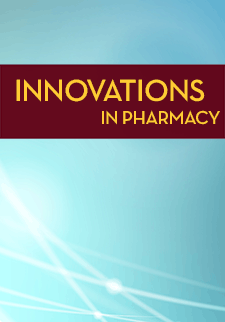Time and Motion Study of Influenza Diagnostic Testing in a Community Pharmacy
Donald Klepser
Allison Dering-Anderson
Jacqueline Morse
Michael Klepser
Stephanie Klepser
Carolyn Corn
DOI: https://doi.org/10.24926/iip.v5i2.341
Keywords: influenza, rapid diagnostic testing, effectiveness, feasibility
Abstract
Background: It has been shown that use of rapid diagnostic tests (RDTs) is able to reduce costs and improve the prescribing practice of antivirals (i.e. oseltamivir) among patients with influenza-like illnesses (ILIs). Using existing Clinical Laboratory Improvement Amendment (CLIA)-waived RDTs and collaborative practice agreements, similar to those used to allow pharmacists to administer vaccines, it is possible for patients to seek point-of-care treatment for influenza or flu-like symptoms at a local pharmacy. Following a review of the patient's symptoms by a trained pharmacist, the qualified patient is offered an RDT to determine if the influenza virus is the cause of the symptoms. Based on the results of the RDT, the patient is provided with the appropriate treatment as defined by an approved practice agreement.
Objective: The aim of this study was to evaluate the feasibility of incorporating an RDT for influenza into community pharmacy practice.
Methods: This time and motion study was conducted at three community pharmacy locations, and a total of eight simulated patient visits were completed utilizing a standardized patient. In addition to determining a total time of the encounter, each simulation was divided into nine timed sub-categories. For data analysis, the time spent in each of the nine sub-categories was assigned to the pharmacist, pharmacy technician, or patient. Time and motion methodologies were used to estimate the total time required to provide the RDT service, to determine the amount of active time required of the pharmacist and pharmacy technician, and to evaluate the ability of the staff to provide the service within its existing workflow.
Results: The average total time to complete the entire patient encounter for an influenza assessment utilizing an RDT was 35.5 minutes (± 3.1 minutes). On average, the pharmacist spent 9.4 minutes (± 3 minutes) per encounter or about 26.5% of the entire encounter. When the pharmacy technician collected the vital signs, the pharmacist-required time was reduced to 4.95 minutes (± 2.7 minutes), which was about a 48% reduction.
Conclusions: The results indicate that an RDT program for influenza assessment required no more than a modest amount of pharmacist time and could be successfully incorporated into regular workflow with little to no disruption of other activities. As such, this approach to influenza management may be a feasible service for community pharmacies to offer patients. This was especially true if the pharmacy had well-trained technicians on staff that could support the service with collection of patient histories and vital signs.
Type: Original Research


